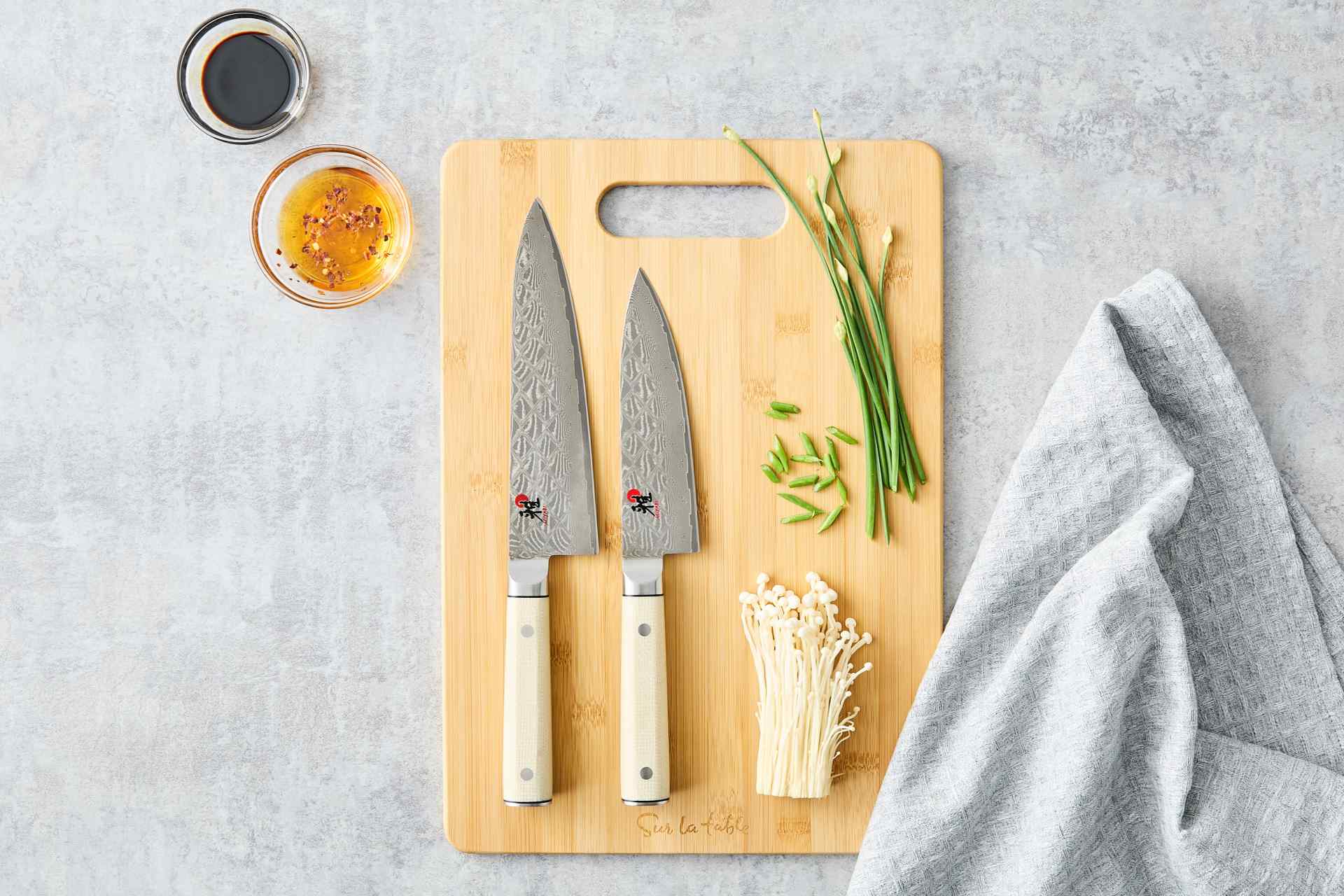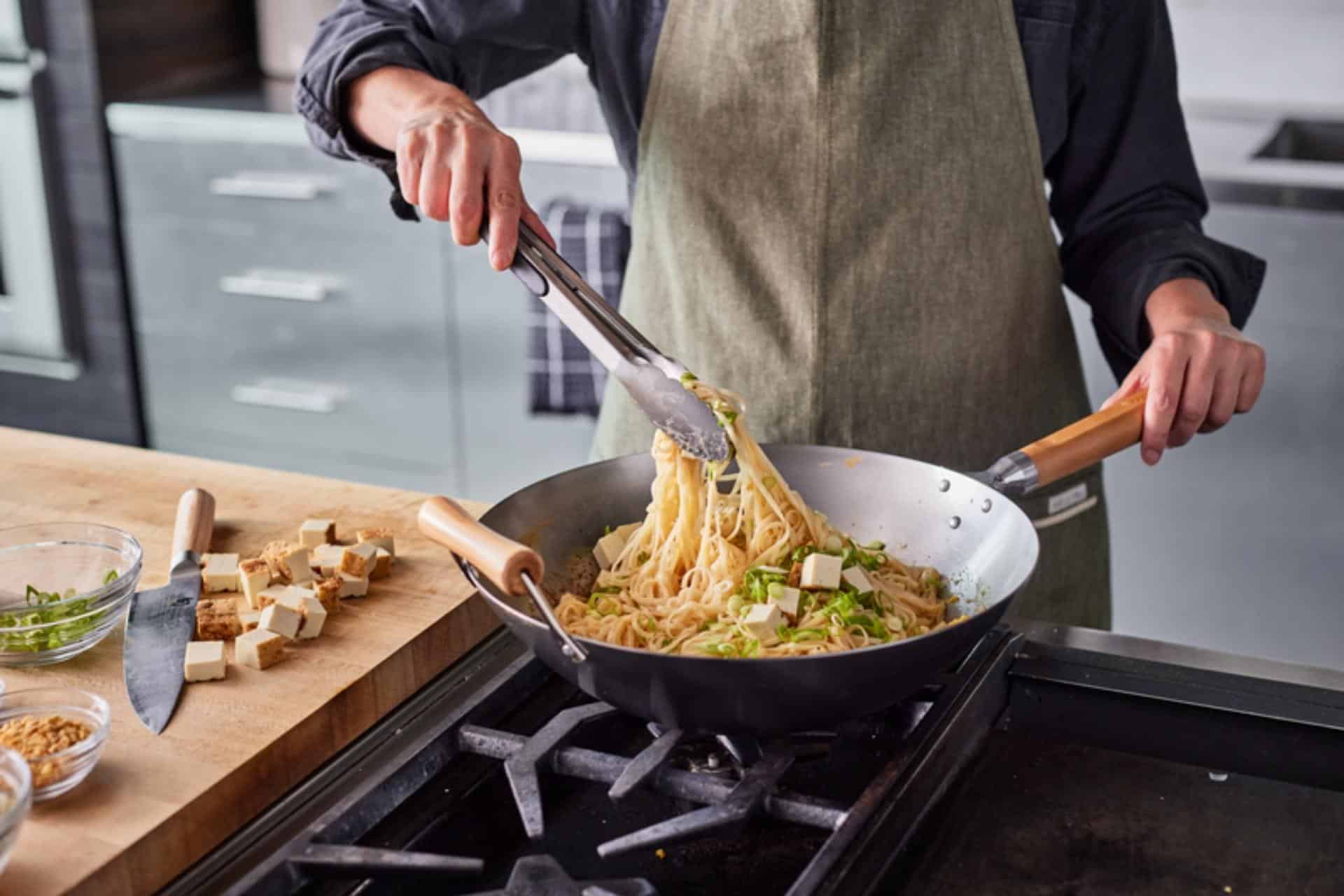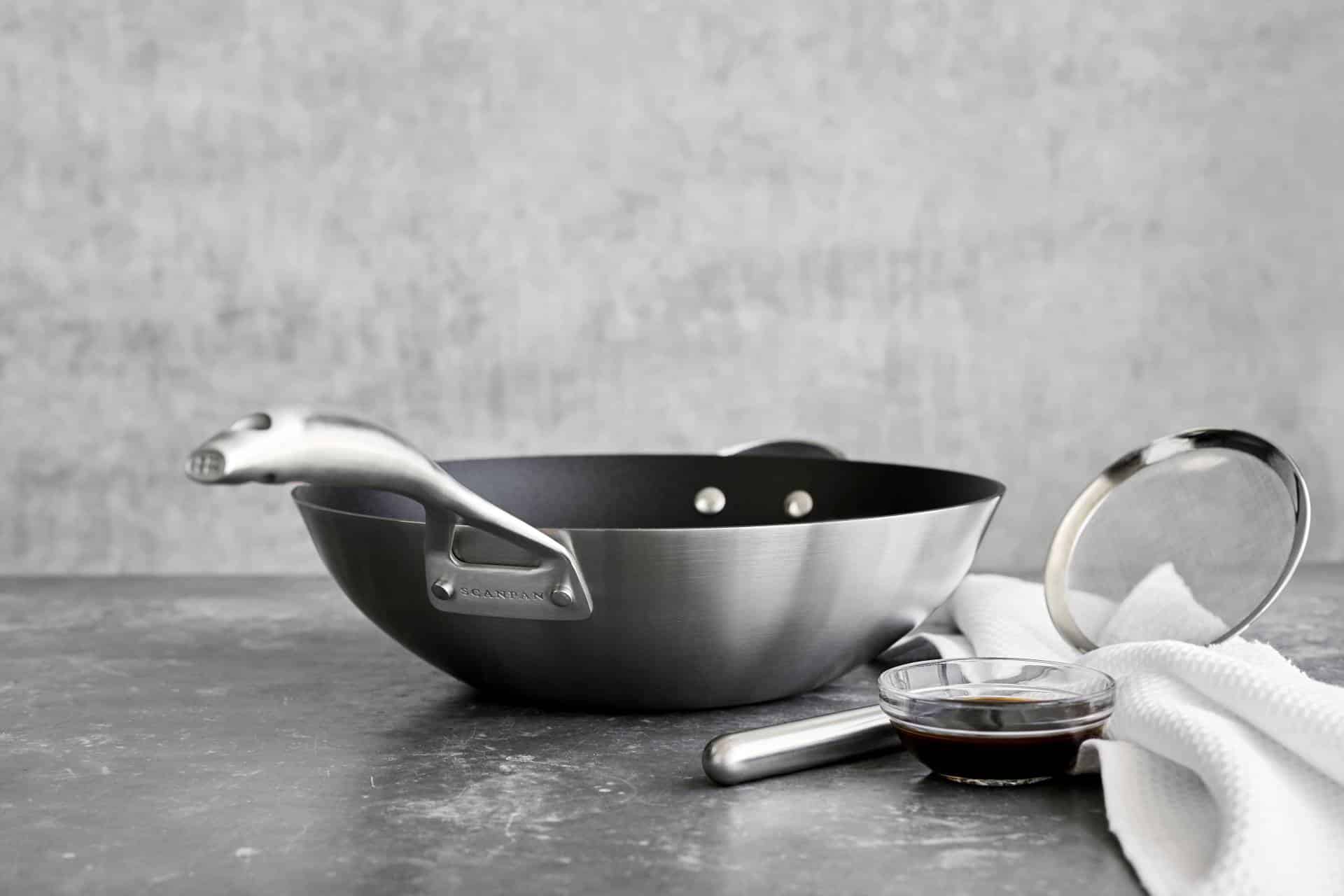Centuries of tradition.


If you haven’t had the pleasure of making your own stir–fry at home, here’s your sign to give it a shot. But before you start chopping and sautéing, there’s one very important tool you’ll need to ensure your stir–fry is restaurant quality—a wok.
A traditional wok is a deep, round-bottomed cooking pot that originated in China.

Its distinctive bowl shape allows the heat to transfer quickly and efficiently, making it ideal for a wide range of cooking techniques—from stir-frying and steaming to poaching and braising. Its ability to retain and transfer heat allows you to cook food in little time and with minimal oil.
There’s a lot to consider when choosing your first wok. Read on for a few helpful tips.
Flat vs. round bottoms isn’t just a personal preference when it comes to woks—it depends on your needs, the type of stove you have and the type of cuisine you’ll be making. Both shapes have their advantages and disadvantages.
Flat Bottom: Pros
If you live in the United States or any Western country, most woks made and sold today feature a flat bottom.
You see, as woks became popular in the US, home chefs found that the traditional round bottom wasn’t well-suited for American stoves. That is until 1971, when restaurateur Joyce Chen patented a flat bottom wok that suited Western-style cooking.
This is a huge advantage, as the flat bottom is much more versatile and proved to be more stable when used on Western stoves and, as a result, the heat is evenly distributed on the bottom and sides, giving you a more even cook.
If you have an electric stove or a ceramic or glass cooktop, opt for a flat-bottomed wok for best results.
Flat Bottom: Cons
Because of their shape, flat bottom woks don’t get as hot as the traditional round bottom, making it less than ideal for recipes that require high heat, like a stir–fry. They also can be a challenge when cleaning as food particles may get stuck in the curvature at the bottom, which can damage the patina with heavy scrubbing.
Round Bottom: Pros
The round bottom wok is traditional in Chinese cooking.
Its unique shape lends itself well to high-temp cooking, making it ideal for stir-frying, boiling, and searing. Round bottom woks distribute heat evenly across the bottom while simultaneously decreasing in temperature as food and oil travel up the sides. This allows for greater control as you can alternate between temps to ensure your food isn’t overcooked.
And unlike flat bottom woks, traditional Chinese woks are easier to clean and maintain as their slick surface and rounded shape don’t trap food particles, which can mean less maintenance over time.
Round Bottom: Cons
The biggest concern with traditional woks is their versatility. If you live in a home with an electric stove or glass or ceramic cooktop, a round bottom wok will prove more frustrating than it’s worth. They simply don’t stand up on their own.
If you have your heart set on a traditional Chinese wok, consider investing in a wok ring. These are designed specifically for Western-style stoves as they keep the wok balanced above the heat source and can provide a more even temperature.
Carbon Steel
If you’re looking for something more traditional, carbon steel woks are your best bet. The material is sturdy, quick-to-heat and renowned for its even heat distribution and retention—just what you want for whipping up a stir–fry! Just keep in mind that it lacks any nonstick qualities, so you’ll want to build up a good patina to prevent food from sticking.
Cast Iron
Woks are also commonly made from cast iron. If you’re used to cooking with cast iron, then this is a great option.
Although heavy, the material heats up quickly and maintains that heat throughout preparation and after it’s removed from the stove. However, it’s important to note that because cast iron holds heat pretty evenly, you lose out on one of the biggest advantages of woks: the ability to alternate between temperatures. Because of this, food must be removed quickly to avoid overcooking or burning.
Non-stick
You can also look for non-stick woks. These are often coated with PFAS or Teflon and don’t require any seasoning, and newer nonstick coatings are made to withstand temperatures of up to 500°F (260°C). This is a great option if you don’t want to spend a lot of time cleaning and reseasoning your wok, but keep in mind that because of the nonstick surface, they won’t brown or caramelize meats and veggies the same way carbon steel or cast iron will.
The best advice? Choose a material you’re comfortable cooking with. Because woks are traditionally used for high-temp cooking techniques, like stir-frying, you’ll want to choose a material that’s familiar to you to avoid overcooking or burning your food.
Again, this depends on your needs.
Since woks were traditionally used for stir-frying, lids were not used as they trap moisture rather than cooking it off.
If you’re using your wok for a variety of dishes and cooking methods, as is the current norm in China, a wok lid makes sense. Because woks can be used for boiling, steaming, poaching or for making soups and stews, manufacturers will often design lids for their woks.
If you’re interested in purchasing a wok but want something that’ll offer convenience and ease of use, an electric wok might just be for you.
Priced similarly to the traditional Chinese wok, electric woks are also made of similar materials, making them a viable option for the casual home chef. They also come pre-seasoned, which saves a lot of time and maintenance. But electric woks do come with their own set of limitations, particularly in size, temperature and overall function.
Most electric woks are made and sold smaller than traditional Chinese woks—on average, electric woks are about 14 inches in diameter, compared to upwards of 28 inches or more for traditional woks—which can inhibit the volume of food you’re able to cook, especially when entertaining for a large group.
The most notable difference in electric woks, however, is their built-in heating element. While convenient for those who don’t have a gas or electric stove, it’s much harder to control the temperature on electric woks, which can lead to overcooked or burnt food if you’re not careful. Additionally, because the heating element is built-in, you lose the ability to toss your food, which gives stir-fries and other dishes that “wok hei” flavor that makes Chinese food so unique.
However, that built-in heating element also offers a unique portability that traditional woks don’t offer. As long as you have counter space and somewhere to plug it in, you can use your electric wok just about anywhere!
So, choosing which wok is right for you will mostly depend on your unique needs. If you’re an avid connoisseur of Asian cuisine and want to recreate restaurant-quality dishes at home (and you have a gas stove), a traditional round bottom wok is the way to go.
But, if you’re simply looking to expand your cooking techniques and try out new cuisine, a modern, flat bottom wok will serve you well.
Happy cooking!
Join The Conversation